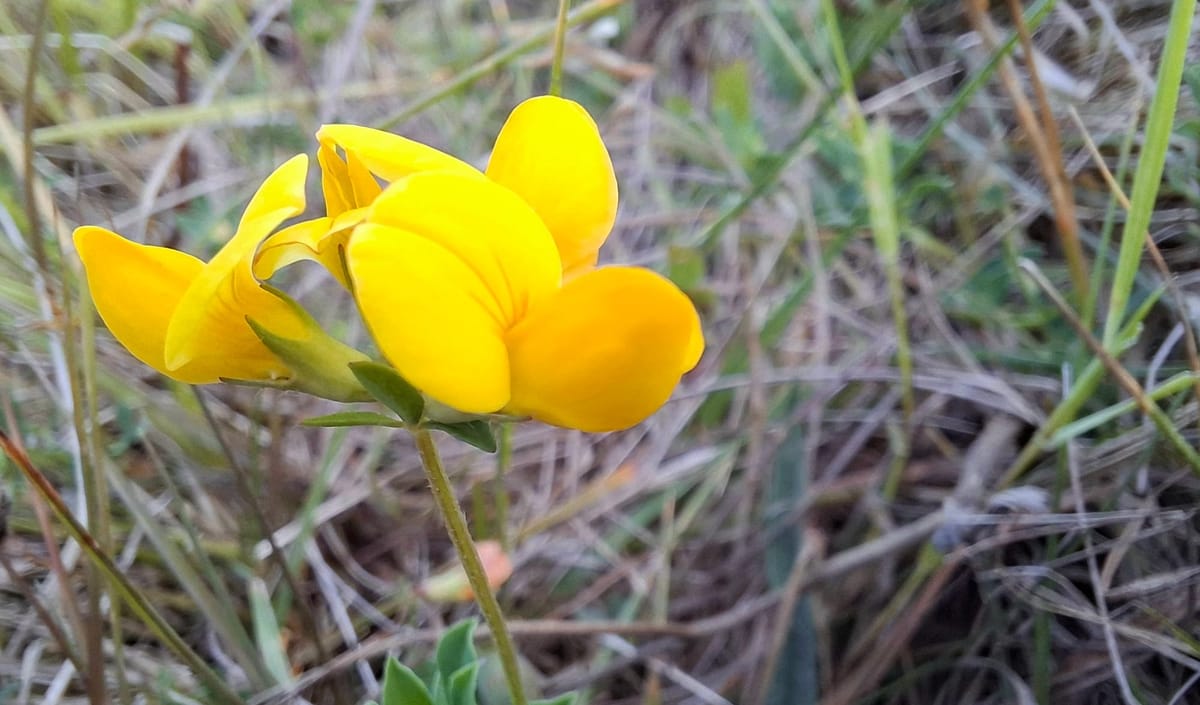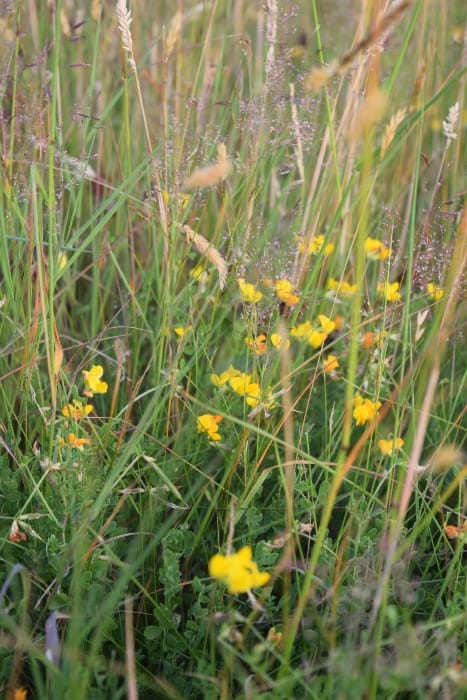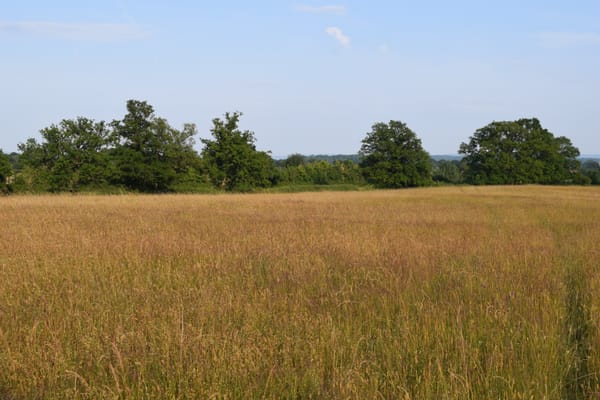These ten acres - and those that we've lost

Ten acres in the heart of England. Within that stretch between the Severn and the Wye. Why have we acquired this land? To save it. As much of it as possible, for as long as possible.
Traditional wildflower-rich hay-meadows are now rare across the UK. Between 1930 and 1984, 97% of traditional meadows were lost in England and Wales.[1,2] Of course, this claim prompts the question of what we mean by a meadow. A meadow is not neglected ground, nor is it pasture land. It is not crops grown for animal fodder, nor is it common land and scrub where animals can browse. It is grassland - ideally unimproved, or with minimal management - that is intentionally allowed to grow, before being cut for hay. It's that simple. It may or may not be grazed after cutting.[3]
But not all meadows are created equal. Indeed, the best have arguably not been 'created' at all - at least, not in the way one would usually understand the word. They are enclosed by people, yes, and set intentionally for the production of hay. So they are 'created' in a sense. But the creation of a meadow is an act of protection, of allocation of space to nature. It is not about man's direct action on the environment. The meadow develops in an act of co-creation with nature, the flowers growing and spreading over the years, insects and butterflies colonising the ground, with the birds and mammals following.
Management of meadows is not like other agriculture. They are not farmed like a wheatfield. The farmer does not sow nor fertilise the hay-meadow. Indeed, fertilising the soil will give fast-growing grasses an advantage, leading to their dominance over slower-growing species. Although our landscape may still have many fields of grass, harvested for hay in midsummer, the way in which these fields are often managed diminishes their diversity and ecological value, not to mention their beauty. They are called meadows, but this masks how far we've drifted from what meadows once were. And still can be.
The ten acres we now hold are diverse, unimproved for decades, and, at the height of summer, host to over 20 million flowers.[4] We hold them in trust for the future. They are part of a landscape with a rich natural and human history. And, with other meadows, they and the species that inhabit them have inspired poets and artists. Each generation sees the meadow afresh, from Virgil imagining Arcadian idylls in his Eclogues to Pink Floyd sampling the skylark's song for Grantchester Meadows in 1969. This blog will cover aspects of these ten acres and the UK's other meadows, their plant and animal life, the history of mankind's interactions with and management of meadows. As well as any other thoughts that may arise whilst lying on one's back amidst the grasses, the scent of dust and earth in the air, looking at a blue sky above as the crickets chirp.

Sources
- R.M. Fuller, 'The changing extent and conservation interest of lowland grasslands in England and Wales: A review of grassland surveys 1930–1984', Biological Conservation 40:4 (1987), https://doi.org/10.1016/0006-3207(87)90121-2
- A. Martin, 'Meadows - 98% gone? Really?', Carmarthenshire Meadows Group, 2021, https://carmarthenshiremeadows.com/2021/04/07/meadows-98-gone-really/
- G. Peterken, Meadows, British Wildlife Collection Vol. 2 (2013), pp.13-15
- Plantlife, The Good Meadow Guide, 2024, https://www.plantlife.org.uk/wp-content/uploads/2024/02/The-Good-meadow-guide-Plantlife.pdf, reported the result of research commissioned by Plantlife that a square metre of meadow held 570 flowers at the height of the flowering season. This means c.24 million flowers in these 10+ acres in midsummer.
